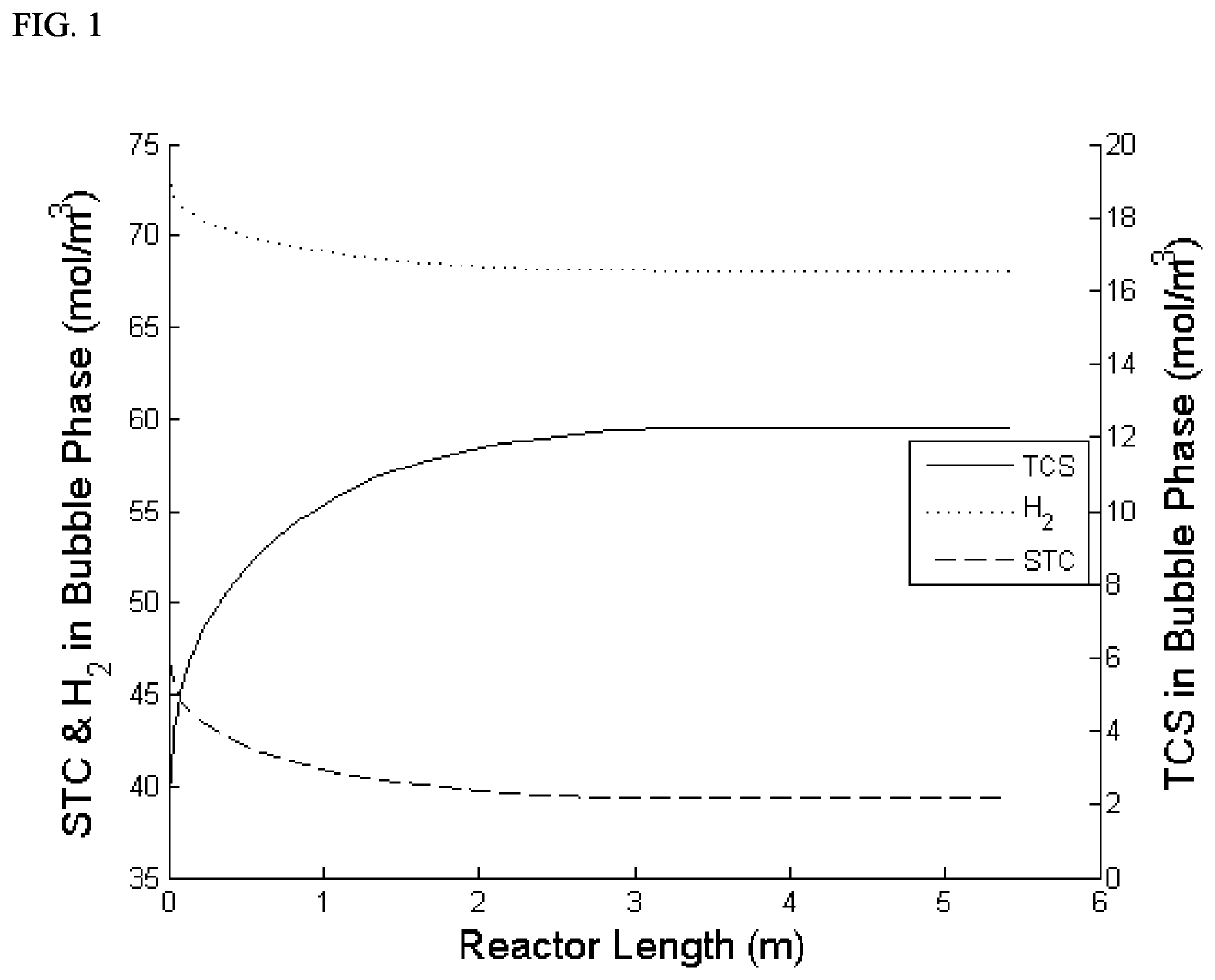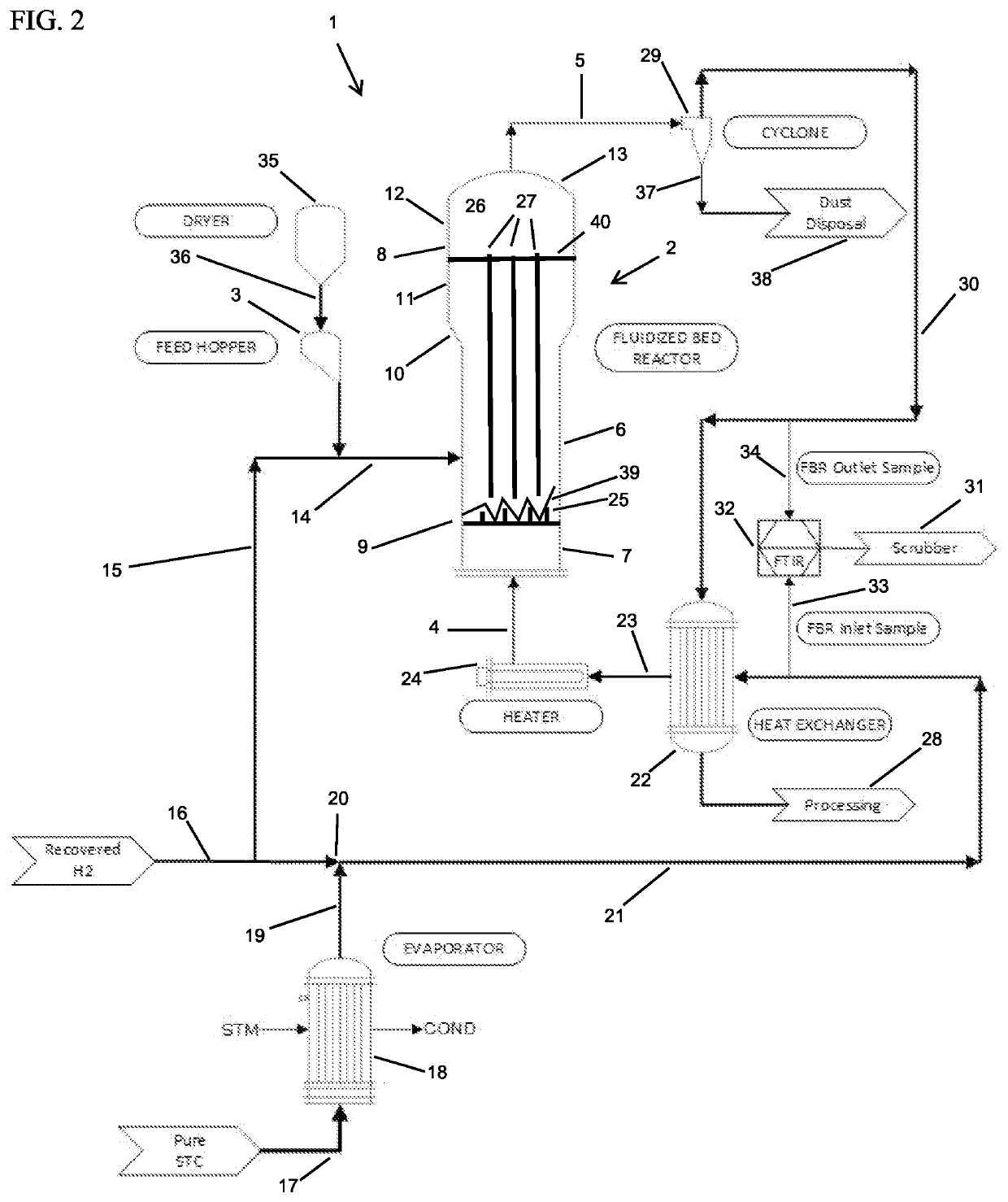Iron catalyzed hydrochlorination of silicon tetrachloride to trichlorosilane
a technology of iron catalysis and silicon tetrachloride, which is applied in the direction of halogenated silanes, inorganic chemistry, chemistry apparatus and processes, etc., can solve the problems of mass transfer inefficiencies, accumulation of iron and copper dust, etc., and achieve the effect of improving the yield of tcs and adding material and operation costs
- Summary
- Abstract
- Description
- Claims
- Application Information
AI Technical Summary
Benefits of technology
Problems solved by technology
Method used
Image
Examples
Embodiment Construction
[0011]In the polysilicon industry, trichlorosilane (TCS) is passed over a circuit of polysilicon seed rods heated to about 1000° C. to produce ultra-pure polysilicon. The TCS feed gas for the polysilicon reactors can be produced by the direct chlorination of metallurgical grade silicon by hydrogen chloride (HCl). This process is typically carried out in a fluidized bed reactor and produces a byproduct of silicon tetrachloride (STC) in the amount of 4-8 mol % in the product stream, depending on operating conditions, as shown in Equations (Eqs.) 1 and 2.
Si mg(s)+3HCl(g)SiHCl3(g)+H2(g) (1)
SiHCl3(g)+HCl(g)SiCl4(g)+H2(g) (2)
STC is similarly created as a byproduct of producing polysilicon rods whose process is approximated by Eqs. 3-5.
SiHCl3(g)+H2(g)Si(s)+3HCl(g) (3)
SiHCl3(g)+HCl(g)SiCl4(g)+H2(g) (4)
SiHCl3(g)+H2(g)SiH2Cl2(g)+HCl(g) (5)
The amount of STC in the product stream is between 1-5 mol % depending on batch time and operating conditions.
[0012]There is a limited market for the s...
PUM
| Property | Measurement | Unit |
|---|---|---|
| height | aaaaa | aaaaa |
| temperatures | aaaaa | aaaaa |
| surface area | aaaaa | aaaaa |
Abstract
Description
Claims
Application Information
 Login to View More
Login to View More - R&D
- Intellectual Property
- Life Sciences
- Materials
- Tech Scout
- Unparalleled Data Quality
- Higher Quality Content
- 60% Fewer Hallucinations
Browse by: Latest US Patents, China's latest patents, Technical Efficacy Thesaurus, Application Domain, Technology Topic, Popular Technical Reports.
© 2025 PatSnap. All rights reserved.Legal|Privacy policy|Modern Slavery Act Transparency Statement|Sitemap|About US| Contact US: help@patsnap.com



